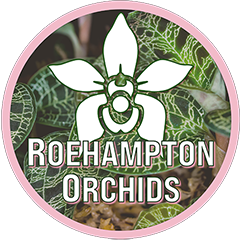In Spike (Flowering)
If you purchase an orchid in spike, it is in a stage of developing a flower spike that may bloom. There are many different stages of spikes, from just beginning of development to about to or fully opened blooms.
Sequential / Continuous bloomers have blooms one after another. Although the previous blooms may have dropped, it will continue to bloom with proper care.
End of - Means the bud are no longer at it's peak potential or nearing it's end. The spike may fully expire if there is wait time for shipping.
Shipping In-Spike: We believe we provide the highest quality of packaging to preserve a spike. However, by purchasing in-spike you are responsible for the risk if the buds blast (failing) or, the spike breaking is always present when shipping orchids in spike. Damaged buds or spikes will not be replaced, these plants will bloom again with proper care.
Blooming Size (No Flowers)
Our maturity terminology is an estimation at what size the plant is able to flower. It is based on other photos and experience. In optimal conditions, smaller orchids have surprised us with beautiful blooms. On the other hand, there have been larger orchids that have refused to spike.
- Seedling size (SS): 2 years or more until bloom
- Near Blooming Size (NBS): should bloom within 1-2 years
- Blooming Size (BS): should bloom within 6 months, or have previously bloomed
Last in stock
When we're down to our last plant, we automatically reduce the price if it doesn't meet our standard grade or match our photos exactly. You're getting a healthy orchid at a better price – it just might have fewer leafs, be slightly smaller, or show minor cosmetic imperfections.











